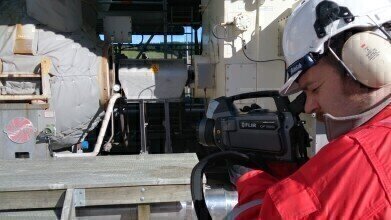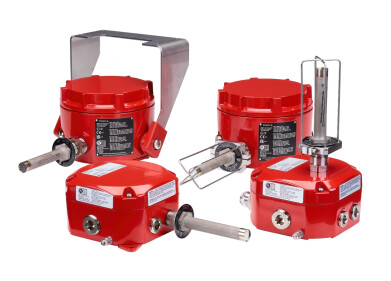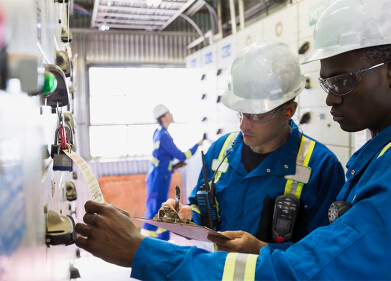Safety
Optical Gas Imaging Helps Protect Offshore Oil & Gas Assets
Jun 21 2013
FLIR Systems reports that remote visual inspection specialists - Inspectahire Instrument Company Ltd. has used its GF320 Optical Gas Imaging (OGI) cameras to provide hydrocarbon leak detection services to the offshore oil and gas industry.
Established in 1981, Inspectahire is a leading international supplier of specialist remote visual inspection technology and solutions to companies in many industries around the world. The company offers equipment rental, contracting and project engineering services supported by a team of skilled engineers who have a wealth of inspection knowledge and experience. Their expertise extends to a wide range of equipment and assets, both onshore and offshore, and in all environments – including harsh and hazardous. All Inspectahire’s advanced inspection solutions are carried out in accordance with the requirements of ISO 9001 best practice.
Cailean Forrester, Managing Director of Inspectahire commented ‘The offshore oil and gas industry are proactive in their search for the best technologies for detecting emissions that may affect the safety, profitability and environmental impact of their assets. At Inspectahire we strive to identify and offer the best available technological solutions for all remote inspection scenarios. For fugitive hydrocarbon emission detection in the offshore oil and gas industry the best technological solution is FLIR optical gas imaging technology as is delivered by their GF320 camera. Optical gas imaging using the FLIR GF320 offers tangible benefits compared to traditional hydrocarbon leak "sniffers" because it can scan a broader area much more rapidly and monitor areas that are difficult to reach with contact measurement tools.The portable camera also greatly improves operator safety, by detecting emissions at a safe distance".
The FLIR GF320 is an optical gas imaging camera designed to help the oil and gas industries better control hydrocarbon emissions, thereby preserving the environment, improving operational safety and minimising revenue loss. The real-time infrared camera is designed for use in harsh industrial environments. It takes advantage of a state-of-the-art focal plane array detector and optical systems tuned to very narrow spectral infrared ranges. This enables the camera to image infrared energy absorbed by hydrocarbon gas leaks. Images are processed and enhanced by the FLIR High Sensitivity Mode feature to clearly show the presence of gases against stationary backgrounds. Gases detectable by the camera appear on-screen as smoke plumes. In the offshore oil and gas industry, the camera offers operators a preventive maintenance tool to help spot hydrocarbon leaks in tanks, pipelines and facilities.
Digital Edition
PIN 25.5 Oct/Nov 2024
November 2024
Analytical Instrumentation - Picturing Viscosity – How Can a Viscometer or a Rheometer Benefit You? - Sustainable Grease Formulations: Evaluating Key Performance Parameters and Testing Method...
View all digital editions
Events
Nov 26 2024 Paris, France
Nov 26 2024 Amsterdam, Netherlands
Nov 27 2024 Istanbul, Turkey
Biogas Convention & Trade Fair 2024
Nov 27 2024 Hanover, Germany
Dec 03 2024 Dusseldorf, Germany



















